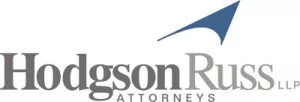One of the continuing challenges in administering distributions from qualified retirement plans (for example, 401(k) plans) is dealing with missing or unresponsive plan participants. Missing or unresponsive participants may never make a claim for benefits, or a distribution check may be sent out and never cashed. While qualified retirement plans may undertake a number of procedural steps to deal with unclaimed benefits or uncashed checks, there are instances in which a plan might provide for the unclaimed benefits or uncashed checks to escheat to a state unclaimed property fund. Overall, escheating to a state unclaimed property fund seems to be a relatively uncommon strategy for qualified retirement plans, especially for active plans – available guidance favors other strategies for dealing with unclaimed benefits or uncashed checks. Nonetheless, transfers to state unclaimed property fund do occur from time to time, and may be seen somewhat more frequently in the case of a terminating plan.
With that background in mind, the IRS recently issued two pieces of guidance relevant to qualified retirement plan benefits that are paid over to a state unclaimed property fund. First, in Revenue Ruling 2020-24, the IRS addressed withholding and reporting requirements. The scenario considered by Revenue Ruling 2020-24 involved a $900 distribution from a qualified retirement plan to a state unclaimed property fund that did not include any Roth or other after-tax amounts. The key aspects of the IRS rulings in Revenue Ruling 2020-24 are as follows:
- Internal Revenue Code Section 3405 provides federal income tax withholding rules with respect to designated distributions from qualified retirement plans. Because none of the exceptions for treatment as a designated distribution are applicable in the scenario presented in Revenue Ruling 2020-24, the IRS concluded that the payment of the benefit to the state unclaimed property fund is a designated distribution subject to federal income tax withholding under Internal Revenue Code Section 3405.
- Because the payment exceeded the $10 reporting threshold, the distribution paid over to the state unclaimed property fund must be reported on a Form 1099-R for the year of the distribution.
- The Revenue Ruling 2020-24 guidance includes a transition rule under which a person will not be treated as failing to comply with the withholding and reporting requirements described in Revenue Ruling 2020-24 with respect to payments made before the earlier of January 1, 2022, or the date it becomes reasonably practicable for the person to comply with those requirements.
Second, in Revenue Procedure 2020-46, the IRS provides relief from the 60-day requirement for rolling over amounts paid over to a state unclaimed property fund to an IRA or other eligible retirement plan. The relief takes the form of an update and modification to Revenue Procedure 2016-47 which provides for a self-certification procedure (subject to verification on audit) that may be used by a taxpayer claiming eligibility for a waiver of the 60-day rollover requirement with respect to a rollover into an IRA or other eligible retirement plan. Revenue Procedure 2016-47 provides a limited list of permissible reasons for such a self-certification. Revenue Procedure 2020-46 modifies and supersedes Revenue Procedure 2016-47 by adding “a distribution was made to a state unclaimed property fund” to the list of permissible reasons for self-certification. Note that a self-certification relates only to the reason for missing the 60-day deadline, not to whether a distribution is otherwise eligible to be rolled over. A taxpayer taking advantage of the self-certification procedures must not have been previously denied a waiver request with respect to a rollover of all or part of the distribution to which the contribution relates, and generally must make the rollover contribution as soon as practicable after the permissible reason or reasons for the self-certification no longer prevent the taxpayer from rolling over some or all of the amount distributed. For purposes of accepting and reporting a rollover contribution into an IRA or other eligible retirement plan, a plan administrator or IRA trustee generally may rely on a taxpayer's self-certification under Revenue Procedure 2020-46 in determining whether the taxpayer has satisfied the conditions for a waiver of the 60-day rollover requirement, unless the plan administrator or IRA trustee has actual knowledge that is contrary to the self-certification. Revenue Procedure 2020-46 is effective on October 16, 2020.
The content of this article is intended to provide a general guide to the subject matter. Specialist advice should be sought about your specific circumstances.






